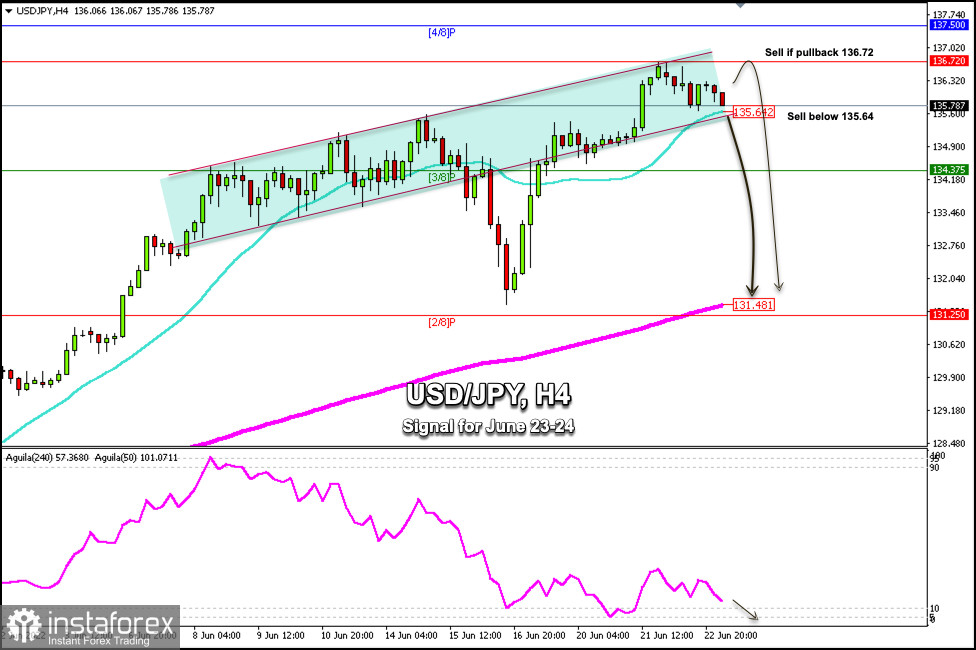
USD/JPY has been falling for the second day in a row, after reaching the highest levels since 1998. The pair tested the high of 136.68 on June 21, but then changed direction and is now approaching the 21 SMA located at 135.64.
The Japanese yen made a technical correction after hitting a new 24-year high. It is weighed down by a variety of factors. Among many is that on previous occasions the Bank of Japan's Governor said that a very weak Yen is detrimental to the economy.
In this context, traders turned cautious amid speculation that any further sharp depreciation of the Japanese yen could force some form of practical intervention from the BoJ and the yen could quickly drop to the psychological level of 130.00.
As a consequence, the yen quickly fell below 136.70. JPY is likely to extend its strength within the technical correction until reaching the 200 EMA located at 131.48 in the next few days.
On the other hand, Fed Chairman Jerome Powell, during his testimony before the Senate Banking Committee, said that the US central bank is firmly committed to reducing inflation and a 0.75% increase is likely at the next meeting in July.
According to the 4-hour chart, we can see that since June 6, the yen is trading inside the uptrend channel. It is likely that a break below this channel could accelerate the downward movement and the price could reach the level of 134.37 (3/8 Murray) and up to 131.48 (200 EMA).
Currently, USD/JPY is trading at 135.78 above the 21 SMA under strong bearish pressure. In the next few hours, we expect a break below the channel and below the 21 SMA in order to sell. Below this zone is likely to be the start of a downtrend that could push the price to 2/8 Murray at 131.25.
The eagle indicator is giving a negative signal. In the next few hours, the Japanese yen is likely to continue its downward move as part of profit-taking and also because it is highly depreciated, putting the Japanese economy at risk.
 English
English 
 Русский
Русский Bahasa Indonesia
Bahasa Indonesia Bahasa Malay
Bahasa Malay ไทย
ไทย Español
Español Deutsch
Deutsch Български
Български Français
Français Tiếng Việt
Tiếng Việt 中文
中文 বাংলা
বাংলা हिन्दी
हिन्दी Čeština
Čeština Українська
Українська Română
Română

